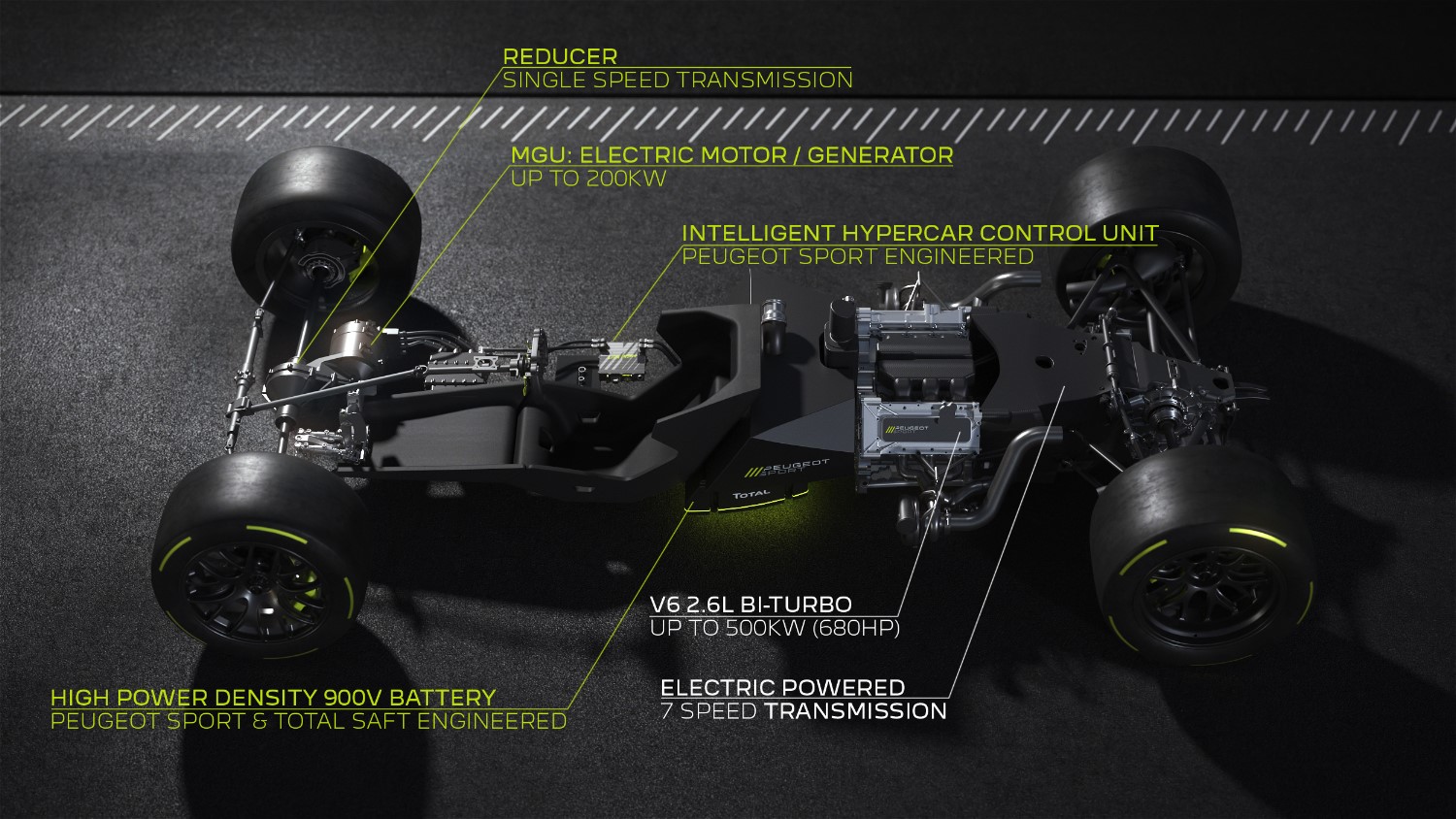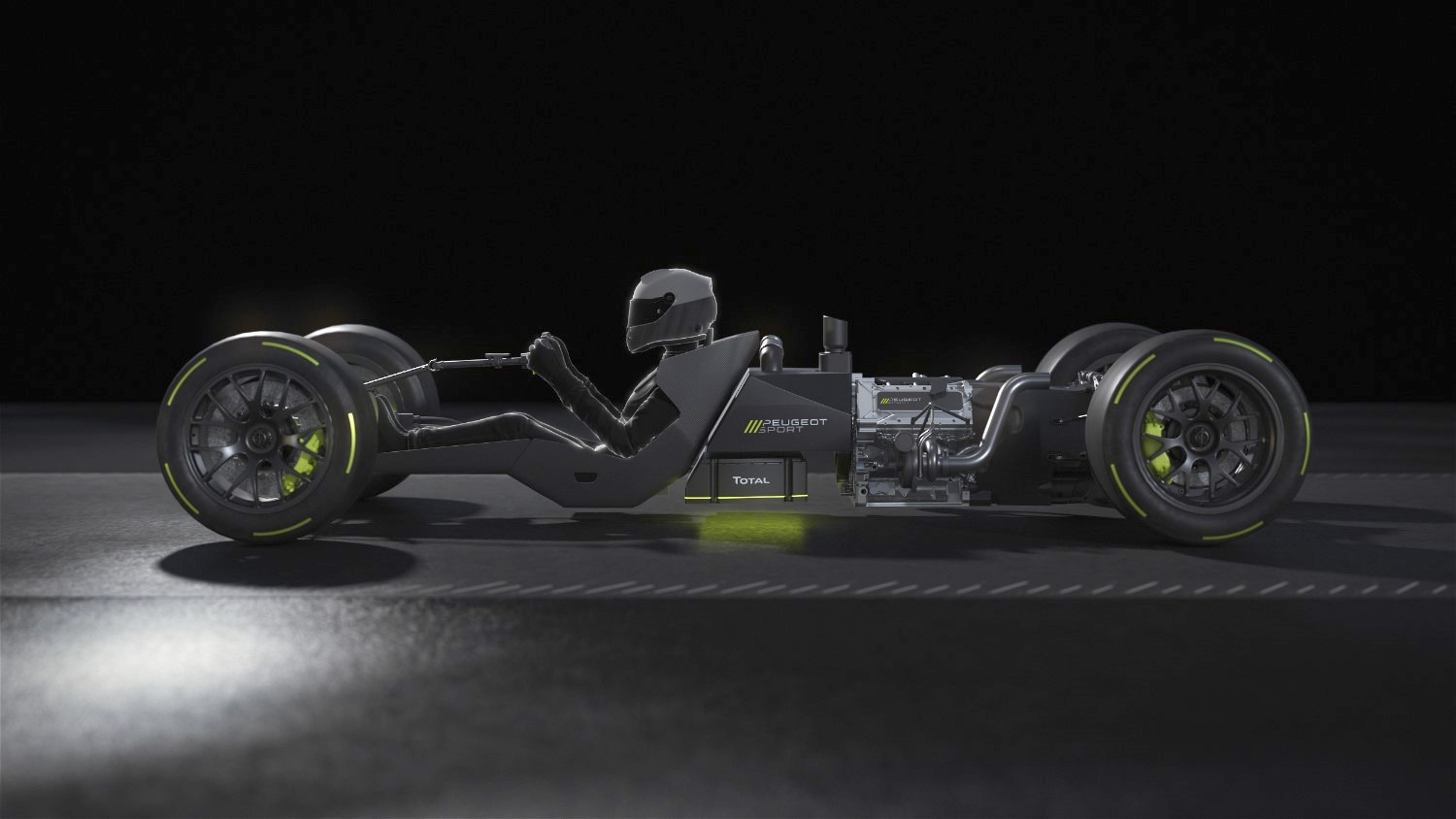Peugeot Sport unveils the technical features of its Hypercar
Peugeot will return to the FIA’s World Endurance Championship (WEC) after a decade-long hiatus with a hybrid race car developed jointly with oil company Total, one of its historic partners. It released preliminary specifications about the new 939-horsepower gasoline-electric drivetrain that will power the race car.
Designing a gasoline-electric powertrain capable of surviving — let alone winning — one of the world’s most challenging races requires balancing weight and performance. Peugeot chose to build the system around a twin-turbocharged, 2.6-liter V6 developed specifically for racing and positioned just ahead of the rear axle. On its own, the 90-degree six sends 680 horsepower to the rear wheels via a seven-speed sequential transmission.

Up front, a 268-horsepower electric motor zaps the front wheels into motion. It’s linked to a 900-volt battery pack positioned between the lone, mid-mounted driver’s seat and the aforementioned V6. Peugeot’s powertrain delivers through-the-road all-wheel-drive, meaning there is no mechanical connection between the axles.
Pilots won’t have 939 horses to play with during races like the 24 Hours of Le Mans, because FIA regulations cap each car’s output at 670 horsepower (500 kilowatts). Peugeot explained that, to comply with the norms, it will program the electric motor to stay off below 75 mph. It will also limit the V6’s output to 408 horsepower, and restrict the motor’s power depending on the battery’s state of charge. In other words, what you’ll see during races held around the world will only be a fraction of what the drivetrain is capable of delivering.
world endur
